|
Location: East Asia; length: 6300 kilometres (4000 miles); drainage basin: 1.8 million square kilometres (0.7 million square miles).
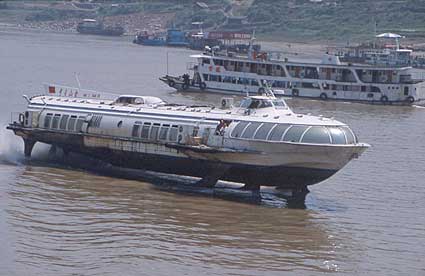
Hydrofoil ferry on the Chang Jiang (Yangtze River), China.
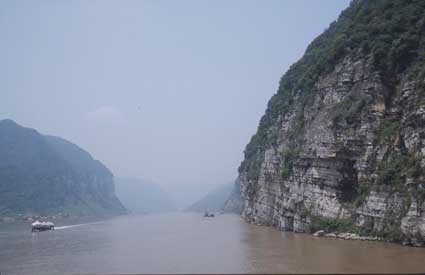
A spectacular part of the Three Gorges before it was flooded, Chang Jiang (Yangtze River), China.
Chang Jiang (Yangtze River), China. This part of the Chang Jiang is located approximately 80 kilometres (50 miles) north of Changsha in northern Hunan Province.Here you can see a maze of crisscrossing rivers, lakes, irrigation canals, and ditches. Two major rivers, the east-flowing Yuan River and the north-flowing Xiang River, merge near the eastern edge of the photograph and flow northeastward into the mighty Chang (Yangtze) River whose course is just off the picture. Triangular Datong Lake (northern area of the photograph) is surrounded by, cultivated rice paddy fields. The two larger lakes are known collectively as Lake Dongting.
The Chang Jiang (Jiang means 'river') flows through central China from the mountains of Tibet to the East China Sea near Shanghai. Fed by melting snows in the spring and summer rains, the Chang Jiang flows most strongly in late spring and summer, declining through the autumn and winter. The channel in the Chang Jiang Gorges is nearly 200 m (700 feet) deep, making it the world's deepest river. On its way from the mountains to the sea, the Yangtze flows through many different types of landscape. The most famous stretch of the river is at the Three Gorges, where the river cuts deeply through hard bands of rock. The river carries so much sediment that it is able to build its delta in to the South China Sea at the rate of nearly 3 kilometres (2 miles) per century. The Chang Jiang system is one of the world's great navigable highways, containing over 30,000 kilometres (19,000 miles) of navigable waterway. The head of navigation for ocean going vessels is Wuhan, some 1000 kilometres (600 miles) from the coast. This contrasts with many of China's other rivers, and it makes the Yangtze more useful for water traffic than all the other rivers in China combined. Many people have been attracted to settle by the river, and some of China's largest cities, including Wuhan, Chongqing, Chengdu, and Nanjing were founded at crossing points. The river has an enormous potential for electricity. At present 200 million kilowatts (nearly half of all China's hydroelectric power) is produced from power plants on the river, but the potential is much greater. A major, and controversial, step forward is the construction of the Three Gorges Dam, one of the largest dam projects in the world. This is now proceeding apace.
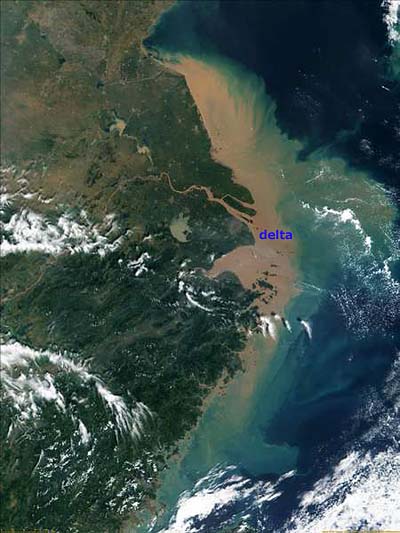
The Chang Jiang delta.
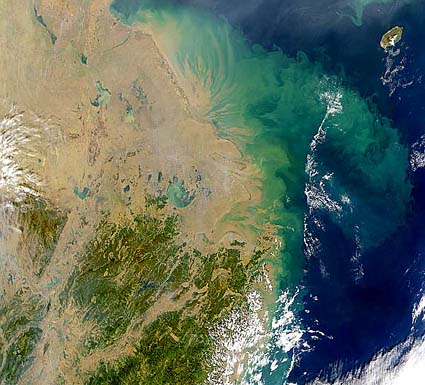
The Chang Jiang delta, showing a plume of silt being carried along the coast.
More pictures from the Three gorges area
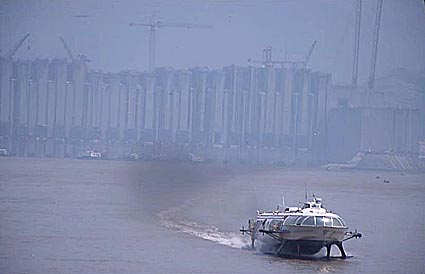
Three gorges dam.
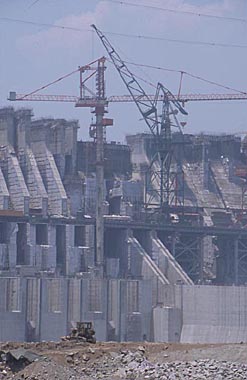
Three gorges dam.
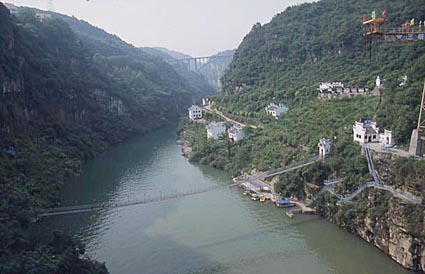
Three gorges.
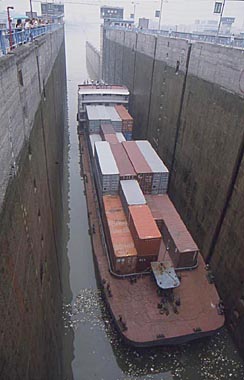
Yichang lock.
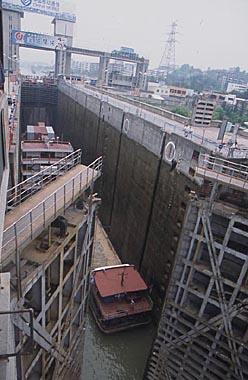
Yichang lock.
|